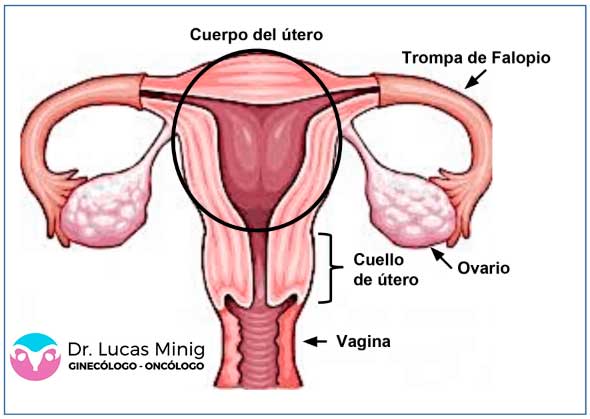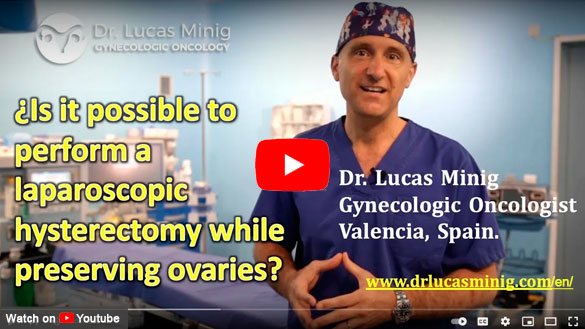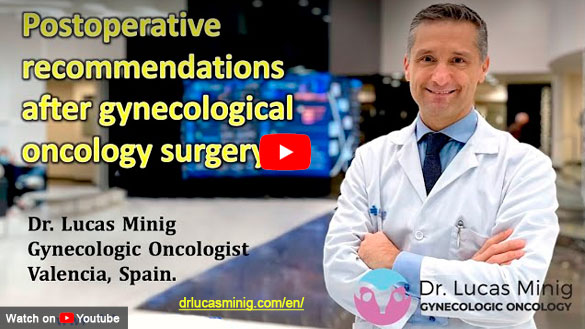
Laparoscopic Hysterectomy Surgery
A laparoscopic hysterectomy involves the surgical removal of the uterus using delicate instruments inserted through small 5-10mm incisions in the pelvic area in a surgery performed laparoscopically rather than through a “open” surgery.
We perform minimally invasive laparoscopic or robotic surgery for more than 95% of women who need an hysterectomy
What Is A Hysterectomy?
The uterus has multiple parts, including the cervix, uterine cavity, fallopian tubes, and ovaries. A hysterectomy includes removing diseased or damaged components of the female reproductive organs. Hysterectomies can vary depending on how much is removed in the surgery. The three types of hysterectomies include partial, total, and radical hysterectomies.
During a partial hysterectomy, doctors surgically remove the uterine cavity while leaving the cervix and fallopian tubes intact.
In some cases, the uterus and cervix will be removed in what is called a total hysterectomy.
Rare cases including trauma or cancer can lead to what is called a radical hysterectomy. In this procedure, the entire uterus, fallopian tubes, and cervix are removed, including its ligaments and lymph nodes.

Request a quick appointment with the specialist in Laparoscopic Hysterectomy, Dr. Lucas Minig, an expert Gynecologist Oncologist
Appointment: Click to Request an Appointment
Contact Us via. WhatsApp:+1-647-515-6748
When Is A Laparoscopic Hysterectomy Necessary?
A Laparoscopic Hysterectomy may be a suitable option to treat severe gynecological diseases while trying to be minimally invasive and minimize recovery time. Your gynecologist may recommend laparoscopic hysterectomies in the following cases:
- Uterine fibroids and Myomas
- Adenomyosis
- Endometriosis
- Cervical and endometrial cancers

Request an Appointment with a Specialist
Advantages of A Laparoscopic Hysterectomy over Traditional Open Surgery
Laparoscopic uterine surgeries typically have shorter recovery time and a decreased chance for complications. Patients can expect to be able to stand up and walk around carefully sooner than those who have undergone open surgery. This is true to the smaller incisions being made lessen the healing time and a less risk of opening stitches, or even surgical complications such as nerve damage or infection.

In a laparoscopic surgery, 4 small 5-10mm wide “keyhole” incisions are made, compared to traditional open surgical methods where incisions could be upward of 10 centimeters long
How To Prepare For A Laparoscopic Hysterectomy?
Depending on your procedure, your pre-op instructions may vary and may require being admitted to the hospital the day before, or arriving at a scheduled appointment time the day of. Cases requiring an overnight stay in the hospital may be kept for more severe cases, depending your unique case.
Since your doctor will use general anesthesia to put you to sleep, it is important to follow guidelines on no eating or drinking within 12 hours of your procedure. Ignoring this can cause your procedure to be cancelled or postponed.
For International Patients traveling to Valencia, arrangements can be made to admit you the day before the surgery. Our team will provide you with specific information on the admission process ahead of your surgery, along with details about our accommodations for international patients.
How Long Does A Laparoscopic Hysterectomy Take?
Generally, a laparoscopic hysterectomy takes between 60 to 90 minutes, but sometimes longer depending on the complexity of a patient’s case. Patients will be put under general anesthesia and be asleep through the procedure.
How Long Will I Need To Stay In The Hospital After A Laparoscopic Hysterectomy?
After your procedure, your doctor will monitor you for pain, bleeding, and infection. Typically, cases without any complications can be discharged from the hospital later the same day with instructions for home recovery and prescribed pain medications . If your doctor sees it to be necessary, patients could also be monitored over 24 hours in hospital.
Request a Second Medical Opinion
What Are The Potential Complications During or After a Laparoscopic Hysterectomy?
The possibility of complications after a laparoscopic hysterectomy is very low, around 1-3%. However, this possibility may increase or decrease depending on the presence or absence of the following factors:
Potential Complications During Laparoscopic Hysterectomy
Post-Operative Complications Following Laparoscopic Hysterectomy
During A Laparoscopic Hysterectomy At Our Clinic
Family members will be able to stay in the same room throughout the surgery without the need to go to any special waiting room. In case of surgeries lasting more than two hours, Dr. Lucas Minig will contact the relatives to report the evolution of the surgery.
After completion of the surgical procedure, Dr. Minig together with his team comes to the room to personally inform all family members of the results of the surgery. There, all the relevant aspects can be discussed and any doubts about it can be clarified.
Recovery After A Laparoscopic Hysterectomy
Immediately Following The Procedure
Patients will be moved to the recovery room to wake up as their anesthetic wears off around 30-45 minutes after the surgery is completed. All recovery rooms have a single bed for the patient, and a bed for one companion. Patients may be discharged the same day or the next morning, depending on her preferences and postoperative recovery.
Dr. Minig will personally visit the patient on the same day of the intervention to explain the results of the surgery. If patients are kept at the hospital for their recovery for multiple days, Dr. Minig will visit her daily until they are discharged from the hospital.
In The Days Following Discharge From The Hospital
Patients are encouraged to gradually resume their normal daily activities with minimal restrictions unless directed specifically by Dr. Mining following their surgery.
It is important to listen to your body and resume normal activities gradually. Following your post operative instructions is important to reduce the risk of post-op complications and more pain. Currently, there is no scientific evidence that restricting movement after laparoscopic hysterectomy increases the possibility of postoperative complications.
The 5mm incisions made during surgery are closed with self-absorbing stitches that go under the skin and will not need to be removed, as your body is able to break down the stitches on its own as it heals. The wounds are covered with adhesive strips to improve the healing process and ensure that scarring is kept to a minimum. Finally, all the small incisions are covered with a transparent and waterproof dressing. This will allow the patient to shower without the inconvenience of getting the wounds wet and avoiding daily dressings. Keep these dressings on for the first 7 days to give your body time to heal. After 7 days the dressings can be removed and as long as the area is kept clean, healing should be simple and painless.
Testimonials from women who have undergone laparoscopic surgery
Watch testimonials from women who have had their surgeries completed by Dr. Lucas Minig in Valencia, Spain.
WE WORK FOR YOUR HEALTH

SPECIALIZED TREATMENTS

CONTROL AND DIAGNOSIS

MAXIMUM TECHNOLOGY

Contact the Laparoscopic Hysterectomy Specialist
Leave us your data and consultation to offer you personalized medical advice
International Consultation
If you want remote medical care, you can consult
through the following links:
International Appointment
Online Consultation
English WhatsApp: +1-647-515-6748



